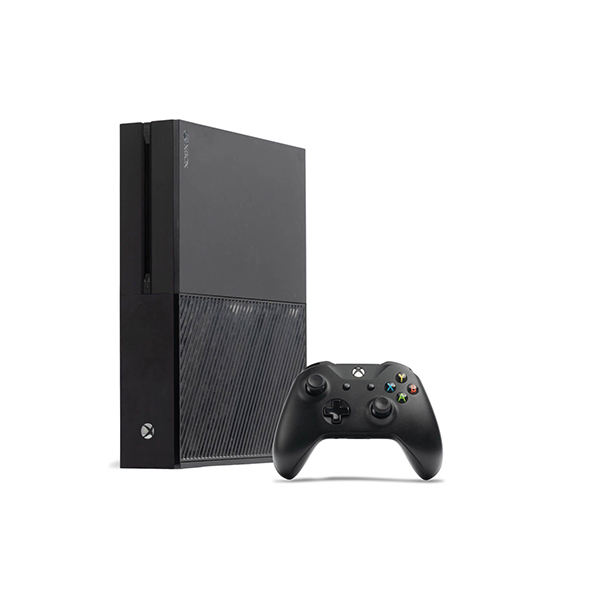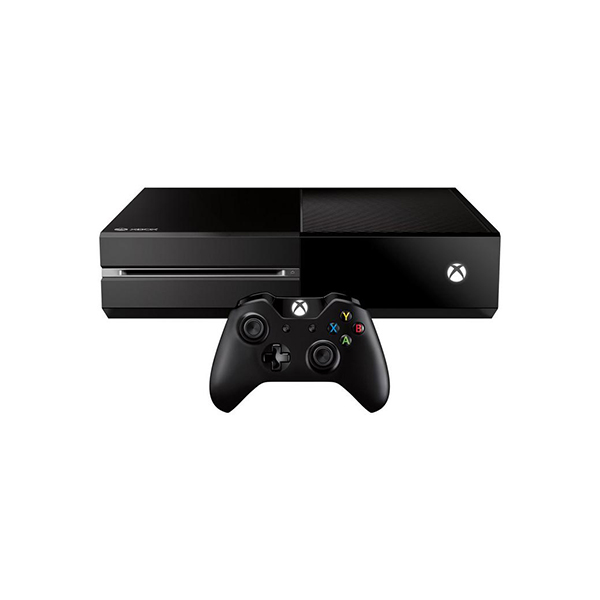- Home
- Specs
- Gaming Console
- Microsoft
- Microsoft Xbox One
Microsoft Xbox One



Specs
Console General Info
| Brand | Microsoft |
| Model | Xbox 360 |
| Released | 01 November, 2013 |
| Storage Capacity | 1 TB |
| RAM (Memory) RAM (Random Access Memory) is a type of computer memory that can be accessed randomly, any byte of memory can be accessed without touching the preceding bytes that allows information to be stored and accessed quickly from random locations. RAM is the most common type of memory found in computer systems, smartphones, tablets and other electronic devices. | 8 GB |
| Processor Modal | AMD Jaguar 1.8GHz 8-core |
| Graphic Processor | AMD GCN Radeon 853MHz |
| Ethernet Port | Yes |
| Weight | 3.5kg |
| HDMI HDMI (High-Definition Multimedia Interface) is a compact audio/video interface for transferring uncompressed video data and compressed or uncompressed digital audio data from a HDMI-compliant source device to a compatible computer monitor, video projector, digital television, or digital audio device. | |
| USB | 3 USB 3.0 ports |
| AV Digital Output | S/PDIF out, IR-out, Kinect port |
| Wi-fi Wi-Fi is a popular wireless networking technology using radio waves to provide high-speed network connections that allows devices to communicate without cords or cables, Wi-Fi is increasingly becoming the preferred mode of internet connectivity all over the world. | Yes |
Microsoft Xbox One Details Review
The Microsoft Xbox One, released in November 2013, marked a major shift in gaming by integrating both gaming and entertainment in one console. Although it has since been succeeded by newer models, the Microsoft Xbox One still holds its ground as a solid option for those looking for a robust gaming and multimedia experience.
Design and Build
The Microsoft Xbox One has a sleek, boxy design reminiscent of a modern home theater device, weighing around 3.5 kg. It comes in a black matte finish with a few glossy accents, giving it a premium look. However, it’s considerably bulkier compared to its main competitor, the PlayStation 4, which was slightly sleeker and more compact. The console includes touch-sensitive buttons, a disc drive for physical games, a variety of ports (HDMI input/output, USB 3.0), and an Ethernet port, allowing users to connect easily with multiple devices.
Hardware Specifications
Under the hood, the Microsoft Xbox One features an AMD Jaguar APU, with 8 CPU cores clocked at 1.75 GHz and a GPU based on AMD’s GCN architecture, with 12 CUs and 1.23 teraflops of computing power. It comes with 8 GB of DDR3 RAM, though the system reserves 3 GB for operating the OS, leaving 5 GB for games and applications. The standard hard drive is 500 GB, which fills up quickly with modern game sizes, though later models offered up to 1 TB.
While the performance was competitive upon release, the hardware could struggle with newer games in terms of resolution and frame rates compared to PCs and newer consoles. Still, Xbox One titles generally run at 720p to 1080p resolutions with a steady 30 fps, providing a smooth experience.
Controller
The Microsoft Xbox One controller is a standout feature, often praised for its ergonomic design and tactile feedback. Microsoft built on the success of the Xbox 360 controller, adding features like a more precise D-pad, impulse triggers for enhanced rumble feedback, and better grip texture. The controller is comfortable for long gaming sessions and is widely used even for PC gaming due to its versatility and support across platforms.
User Interface
Xbox One’s UI underwent several iterations, eventually settling on a tile-based layout inspired by Windows. This interface was smooth but sometimes felt cluttered due to the numerous features and content options. Integration with Xbox Live, Microsoft’s online service, brings social features, streaming options, and access to digital games, making the Microsoft Xbox One as much a media hub as a gaming console.
The UI, while functional, initially had issues with navigation speed, but later updates improved performance and ease of use. Voice commands were available through the Kinect (optional), allowing for hands-free navigation, though Kinect’s prominence faded over time due to lackluster support and the fact that many users found it redundant.
Backward Compatibility
One of the Microsoft Xbox One’s most significant achievements was its focus on backward compatibility. Xbox added compatibility for many Xbox 360 and original Xbox games over time, allowing users to play their older titles on the new system. This feature became a strong selling point, especially as the library of backward-compatible titles grew, offering access to classic games without needing to own older consoles.
Multimedia and Entertainment
One of the Xbox One’s main selling points was its all-in-one entertainment approach. The console supports streaming apps like Netflix, Hulu, and YouTube, and even allows users to connect their cable or satellite TV box to watch live TV. While this vision of a complete multimedia hub didn’t entirely revolutionize how people consume media, it’s still a nice feature for those who want a versatile device.
Another unique feature was the Microsoft Xbox One’s support for Blu-ray discs, letting it serve as a Blu-ray player. Combined with HDMI pass-through, the Xbox One remains a capable multimedia device for people who want more than just gaming from their console.
Game Library
Microsoft Xbox One’s game library is extensive and has grown significantly over the years. Major titles include Halo 5: Guardians, Gears of War 4, Forza Horizon 3, and Sunset Overdrive. While some players felt the Xbox One’s exclusive titles didn’t measure up to the competition’s, Xbox Game Pass, a subscription service launched later, gave users access to a vast library of games for a monthly fee, dramatically enhancing the value of owning an Xbox One.
Cross-platform play and compatibility with Microsoft’s Xbox Live network also make it easy for gamers to connect with friends on PC. For a monthly fee, Xbox Live Gold members could also receive free games every month, known as “Games with Gold,” and discounts on other digital titles.
Performance and Graphics
In terms of graphics and performance, the Xbox One was a solid console in its time. However, it did lag slightly behind the PlayStation 4 in raw performance, with some games running at a slightly lower resolution or frame rate. Microsoft later released upgraded models, such as the Xbox One S (with HDR support and a slight performance bump) and the Xbox One X (with 4K gaming capability), to keep up with advancements in gaming visuals and processing.
Pros and Cons
Pros:
- Excellent controller with ergonomic design
- Strong multimedia and entertainment support
- Backward compatibility with Xbox 360 and original Xbox games
- Xbox Game Pass for a vast library of games
- Solid online service with Xbox Live
Cons:
- Bulky design compared to competitors
- Slightly lower graphical performance than PlayStation 4
- Kinect was underutilized and phased out
- Limited storage on the standard 500 GB model

Verdict
The Xbox One is a powerful console with versatile entertainment options, a large game library, and excellent backward compatibility. While it doesn’t surpass some competitors in terms of graphical performance, it makes up for it with a strong controller, extensive multimedia features, and the Game Pass subscription. The Xbox One is ideal for those looking for an all-around entertainment system rather than just a gaming console. Although it’s now outdated, it still holds value, especially for casual gamers or as a secondary console.
Review
Disclaimer Note
All prices in Pakistan is updated daily from the price list provided by local shops and dealers but we can not guarantee that the information / price on this page is 100% correct (Human error is possible), always visit your local shop for exact cell phone cost & rate.










